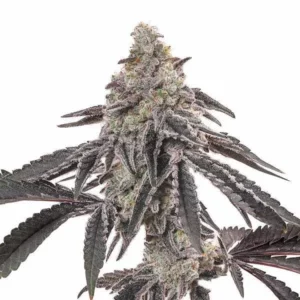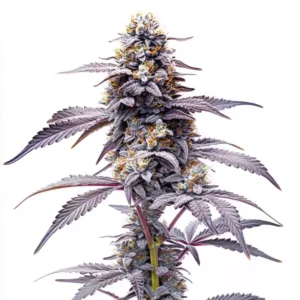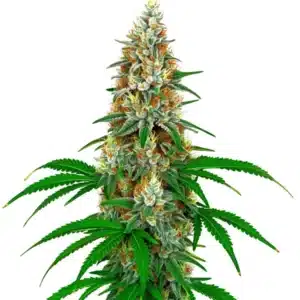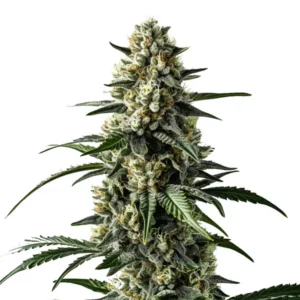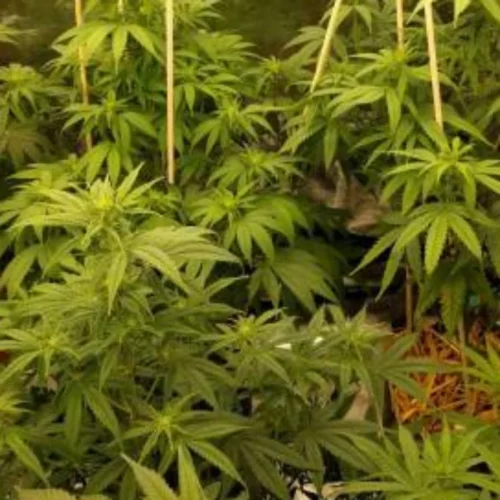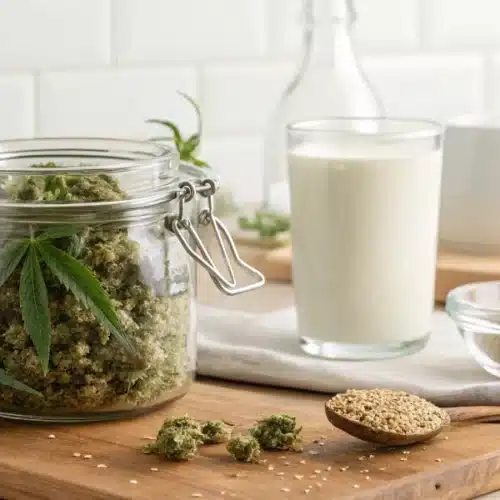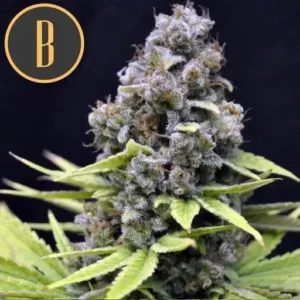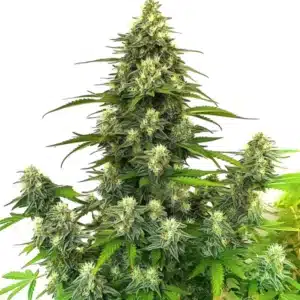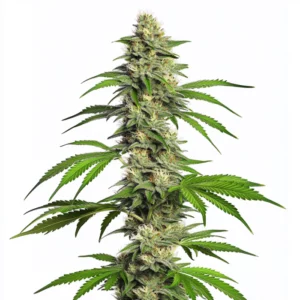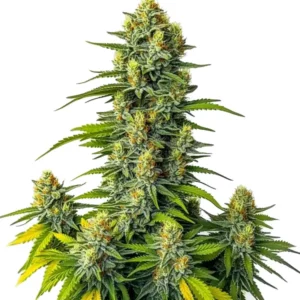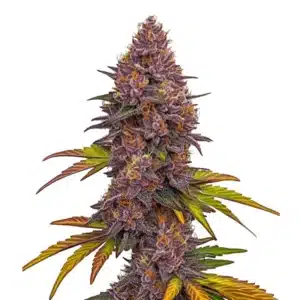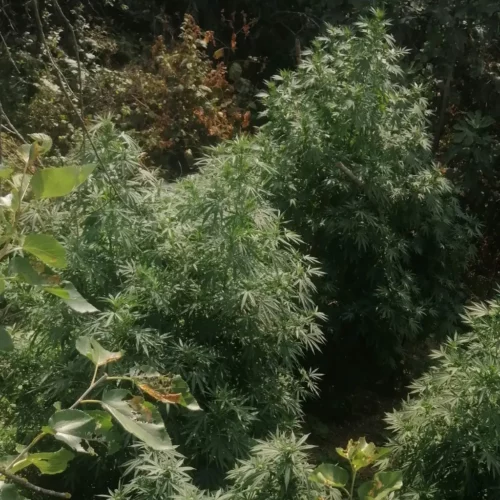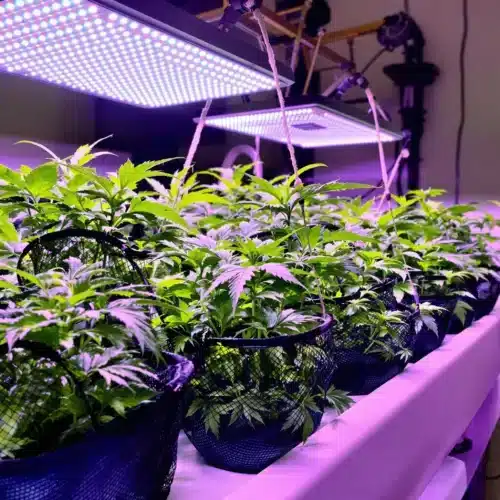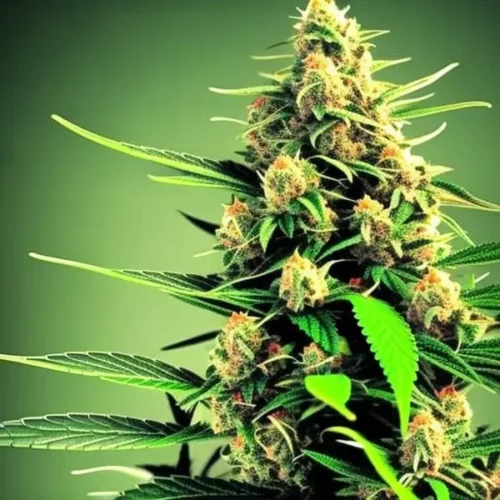What Is Autoflowering Cannabis?
Can you Clone Autoflower? Autoflowering cannabis strains are unique in the world of cultivation because they don’t depend on light cycles to trigger their flowering stage. Unlike photoperiod plants, which require changes in light exposure to switch from vegetative growth to flowering, autoflowers rely on their internal genetic clock. They start flowering after a specific period, usually around 3-4 weeks from germination, regardless of the light they receive.
Autoflowers are popular due to their rapid growth cycles, resilience, and the fact that they’re generally easier to manage. But for growers looking to create clones, autoflowers present unique challenges that make cloning less straightforward than with photoperiod plants.
Key Characteristics of Autoflower Strains
One of the most defining features of autoflowers is their speed. These plants tend to complete their life cycle in 8-12 weeks, which is significantly faster than traditional photoperiod strains. This characteristic makes them attractive to those who want to see faster results without long waiting periods. Another unique feature of autoflowers is their genetic stability. They’re often a cross between Cannabis sativa or Cannabis indica and Cannabis ruderalis, a subspecies that naturally autoflowers. This genetic blend is what allows them to flower independently of light cycles.
Additionally, autoflowers are generally more resilient to environmental stressors. This hardiness makes them suitable for beginners or those without complex grow setups. However, it’s this very independence and genetic blend that complicates attempts at cloning.
Differences Between Autoflower and Photoperiod Cannabis
In contrast to autoflowers, photoperiod cannabis plants rely heavily on light cycles to initiate flowering. When grown outdoors, photoperiod plants typically start flowering as the days shorten in late summer or early fall. Indoors, growers control the switch to flowering by changing the light schedule from 18 hours of light to 12.
This control over growth stages makes photoperiod strains highly clone-friendly. By keeping a photoperiod plant in its vegetative stage indefinitely, growers can create “mother plants” that supply a steady source of clones. Autoflowers, with their fixed timelines, cannot provide this luxury, as they are pre-programmed to flower after a set period, regardless of cloning efforts.
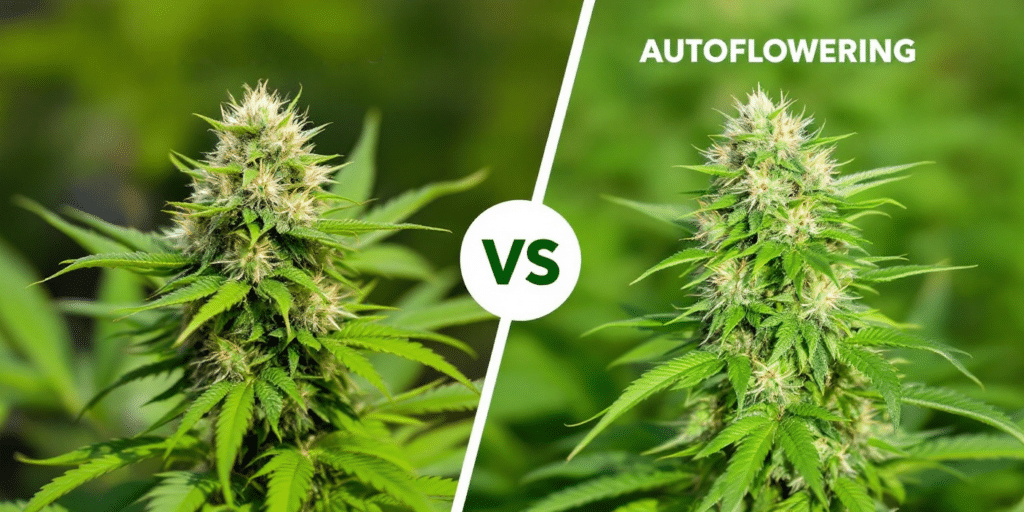
Promos & Deals
Why Cloning Is Popular Among Cannabis Growers
Cloning has become an integral technique for cannabis cultivation, especially among those aiming for consistent results. Cloning offers growers the ability to produce plants with identical genetics, ensuring each crop shares the same potency, yield, and overall characteristics. This consistency is particularly valuable for growers looking to create high-quality, uniform harvests over time.
Benefits of Cloning for Consistency and Quality
By cloning cannabis plants, growers can reproduce plants with known genetics, guaranteeing that each new plant will have the same traits as the parent plant. This is especially beneficial for strains with high THC, unique terpene profiles, or specific growth patterns. With cloning, growers can maintain these qualities without relying on the variability of seeds.
For commercial cultivators, cloning provides an efficient way to produce large volumes of plants that are identical in quality, which is essential for maintaining product standards. Cloning can also shorten the time between crops, as clones typically grow faster than plants started from seed.
Typical Cloning Success with Photoperiod Strains
Photoperiod strains, unlike autoflowers, are ideal candidates for cloning because they allow for “mother plants.” These mother plants are kept in a perpetual vegetative state, meaning they can provide an ongoing supply of cuttings without ever flowering themselves. Growers can take multiple clones from a single photoperiod mother plant, ensuring consistent and predictable harvests.
With photoperiod strains, cloning success rates are generally high. The ability to control light cycles and keep a plant from flowering makes it easier to establish strong, healthy clones that match the mother plant in genetics and quality. This simplicity is part of why cloning photoperiod strains is a widely used method among cannabis growers.
Challenges of Cloning Autoflowering Cannabis
Cloning autoflowering cannabis introduces a new set of challenges for cultivators. Because autoflowers operate on a fixed life cycle that doesn’t reset or restart when cloned, growers often encounter significant obstacles. The primary issue is timing, autoflowers are programmed to flower after a certain number of days, regardless of whether they’re grown from seed or taken as a clone.
The Unique Life Cycle of Autoflowers
Autoflowers operate on a strict schedule dictated by their genetic programming. Unlike photoperiod strains, which can stay in the vegetative stage as long as they receive the right light cycle, autoflowers will transition to flowering at a set point in their life cycle. This shift usually happens within 3-4 weeks, depending on the strain, and does not reset when a cutting is taken for cloning.
This rapid timeline leaves little room for establishing clones. Since the autoflower “clone” has the same age as the parent plant, it will continue to mature along the same schedule, often flowering before it can properly root and develop into a mature plant. This constraint is a significant hurdle for anyone attempting to clone autoflowers successfully.
Why Growth Timelines Limit Cloning Success
The fixed growth timeline of autoflowers limits their cloning potential because the cutting taken from the parent plant continues to age, maintaining the same internal clock. This means that even if you successfully root an autoflower cutting, it won’t revert to a vegetative state to grow and establish itself. Instead, it will typically enter flowering prematurely, often leading to a stunted, underdeveloped plant with a low yield.
This rapid maturation of clones is why autoflowers are typically not cloned in traditional cultivation settings. Unlike photoperiod plants, which can be cloned and kept indefinitely, autoflower clones usually result in weak plants with minimal bud production.
Limitations in Root Development for Autoflower Clones
Root development is another critical issue when attempting to clone autoflowers. Due to the short vegetative phase of autoflowering cannabis, clones don’t have sufficient time to establish a strong root system before entering the flowering phase. A weak root system can hinder nutrient and water uptake, ultimately leading to stunted growth and poor yields.

Reduced Vegetative Period and Impact on Root Growth
Autoflowers naturally have a short vegetative period, which restricts their ability to develop robust root systems. When cloning, roots are essential to support plant growth, and without an extended vegetative phase, autoflower clones lack the time needed to develop these vital structures fully.
This limited root growth impacts the overall health and resilience of the clone. In many cases, autoflower clones may appear smaller and weaker than seed-grown counterparts, struggling to absorb the nutrients needed to sustain healthy growth. This challenge is a primary reason why many growers avoid cloning autoflowers.
Issues with Weak Roots in Autoflower Clones
Autoflower clones often exhibit weak, underdeveloped root systems due to the rapid transition to flowering. Weak roots limit the plant’s ability to uptake water and nutrients efficiently, which can lead to nutrient deficiencies, wilting, and slower overall growth. Additionally, weak roots make plants more susceptible to stressors like temperature changes and pest infestations.
With limited root strength, autoflower clones may yield significantly less than plants grown from seed. Even with optimal care, autoflower clones are often incapable of achieving the same vigor or productivity, leading growers to seek alternative methods for preserving autoflower genetics.
Comparing Autoflower Cloning to Photoperiod Cloning
While cloning photoperiod strains has become a staple in cannabis cultivation, cloning autoflowers is notably more challenging and often yields unsatisfactory results. Understanding the differences in how each type responds to cloning efforts can help growers make informed decisions about whether cloning autoflowers is worth attempting.
Why Cloning Techniques Differ Between Strain Types
The fixed life cycle of autoflowers makes cloning them fundamentally different from cloning photoperiod plants. For photoperiod strains, the light cycle is the primary factor controlling growth stages, giving growers the flexibility to manage each stage with precision. This control allows growers to manipulate a plant’s growth, keeping mother plants in the vegetative phase indefinitely and taking clones as needed.
In contrast, autoflowers are on a rigid internal schedule that can’t be adjusted or delayed. No amount of light control can stop an autoflower clone from continuing along its pre-set timeline. This lack of control is a significant limitation and one of the reasons why cloning autoflowers doesn’t provide the same benefits as cloning photoperiod strains.
Impact of Cloning on Yield and Plant Health
Cloning typically provides a pathway to uniform, predictable yields. However, with autoflowers, the result is often inconsistent and lower in quality. The clone inherits the same age as the mother plant, which means it reaches flowering quickly, limiting vegetative growth and reducing the potential yield.
Additionally, autoflower clones tend to be less robust and more susceptible to stress, making them harder to maintain in less-than-perfect conditions. Many growers find that autoflower clones simply don’t perform well enough to justify the effort, opting instead for other methods to preserve and reproduce desired autoflower genetics.
Practical Attempts at Cloning Autoflowers
Despite the challenges, some growers still attempt to clone autoflowers. For those determined to give it a try, understanding the steps involved and setting realistic expectations are essential. Cloning autoflowers requires a delicate touch, precise timing, and an understanding that results may not match those of clones from photoperiod strains.
Steps for Cloning Autoflowers Despite Challenges
To start cloning an autoflower, choose a healthy plant that has recently entered its vegetative phase. Taking a cutting too late in the growth cycle will almost certainly lead to poor results. Select a sturdy lower branch with visible growth and make a clean cut using sterilized scissors or a blade. Dip the cut end into a rooting hormone to encourage root development, then place it in a suitable growing medium like rockwool or a seed-starting plug.
From here, it’s crucial to maintain high humidity, ideally around 70-80%, and provide indirect, low-intensity lighting to prevent the cutting from flowering too quickly. Keeping the clone in a warm environment (about 70-75°F) will support root formation. These conditions offer the best chance for successful rooting, but remember, the clone will likely still progress to flowering on the same timeline as the mother plant.
Best Environmental Conditions for Autoflower Cloning
Environmental control is vital for autoflower clones to root effectively. Since autoflowers are prone to enter flowering quickly, high humidity and consistent temperatures are key. Using a humidity dome can help retain moisture and prevent the cutting from drying out before roots form.
Lighting should be kept at a low intensity to reduce stress and avoid triggering flowering early. T5 fluorescent or LED lights are excellent for this purpose, as they provide enough light without causing the cutting to mature prematurely. Daily misting can help clones stay hydrated, as they’re initially absorbing moisture primarily through their leaves rather than roots.

Managing Expectations When Cloning Autos
One of the most important aspects of cloning autoflowers is setting realistic expectations. Autoflower clones will likely be smaller, less productive, and may not exhibit the same vigor as seed-grown plants. However, understanding these limitations can help you decide whether cloning autoflowers aligns with your goals or if alternative methods might be better suited.
Why Clones May Not Grow to Full Potential
Autoflower clones are often stunted because they enter flowering on a preset schedule, leaving little time for full root and vegetative development. These limitations in growth potential mean that clones may end up being smaller and yielding less than anticipated. This reality makes cloning autoflowers a challenging option for those who prioritize high yield and robust plant growth.
For many, these limitations render autoflower clones impractical compared to photoperiod clones or starting fresh with new seeds. Growers interested in cloning autoflowers should be prepared for modest results and use clones primarily for experimentation rather than production.
Signs of Stunted Growth in Autoflower Clones
Stunted growth in autoflower clones is often characterized by short stature, limited branching, and small bud sites. While these plants may still flower and produce buds, the yield is typically minimal. Clones may also struggle with nutrient uptake, showing signs of deficiency or weak root systems due to their abbreviated vegetative period.
Keeping a close eye on the plant’s health, nutrient intake, and hydration can help minimize stunting to some extent, but even with perfect care, autoflower clones will generally not reach the same potential as their seed-grown counterparts.
Is It Worth Cloning Autoflowers?
Deciding whether cloning autoflowers is worth the effort depends largely on the grower’s objectives. For some, the prospect of maintaining the genetics of a particularly impressive autoflower is appealing, even if the resulting clone won’t reach full potential. For others, the limitations and reduced yield make cloning autoflowers impractical.
Pros and Cons of Cloning Autoflower Cannabis
Pros:
- Cloning offers a way to replicate a plant with desirable genetics, even in autoflowers.
- Successful clones will share the characteristics of the mother plant, like flavor profile and potency.
- Cloning can be a rewarding experiment for growers looking to test their skills.
Cons:
- Limited yield and reduced growth potential make autoflower clones less productive.
- The clone’s age mirrors that of the mother, leading to stunted or early flowering.
- Labor-intensive process with no guarantee of success, often better replaced by seed propagation.
When Cloning Autoflowers Might Be Useful
Cloning autoflowers may have specific applications for breeders or growers experimenting with genetics. For instance, if you have an exceptional plant with unique characteristics, cloning can provide a short-term way to maintain those genetics. However, in terms of practicality and productivity, most growers find that cloning autoflowers isn’t the most effective use of resources and time. For those still interested in preserving autoflower genetics, there are alternative methods worth exploring.
Alternative Methods to Reproduce Autoflower Traits
For growers who want to maintain the genetics of autoflowers without the challenges of cloning, there are several reliable options. These methods allow for consistent reproduction of autoflower traits while offering better growth potential and yields than clones typically provide.
Feminized Autoflower Seeds as an Alternative
One of the simplest ways to reproduce autoflower traits is by using feminized autoflower seeds. These seeds are bred to produce plants with the same genetic characteristics, ensuring the autoflowering trait is passed down. With feminized seeds, growers have the assurance that each plant will flower automatically and display similar traits to the parent plant.
Benefits of Using Feminized Seeds for Consistency
Feminized seeds offer consistent results without the challenges of cloning. Since they are bred to produce female plants, you eliminate the risk of unwanted males, which can ruin a crop. Feminized autoflower seeds also retain the original plant’s characteristics, so you get the benefit of predictable growth, yield, and potency without the hassle of cloning.
Seed Selection Tips for Quality and Genetics
Choosing high-quality seeds from reputable sources is key to replicating desired traits. Look for seed banks like blimburnseeds.com that specialize in autoflower genetics, providing reliable strains that are bred for consistency and potency. Seed selection should focus on traits that matter most to your grow goals, such as yield potential, THC content, and flavor profile, ensuring that each plant delivers on your expectations.
Using Breeding to Maintain Autoflower Genetics
Breeding is another effective way to reproduce autoflower traits without the need to clone. By selectively breeding autoflower plants with the desired characteristics, growers can create seeds that consistently display those traits. This approach is particularly useful for maintaining rare or custom genetics over multiple generations.
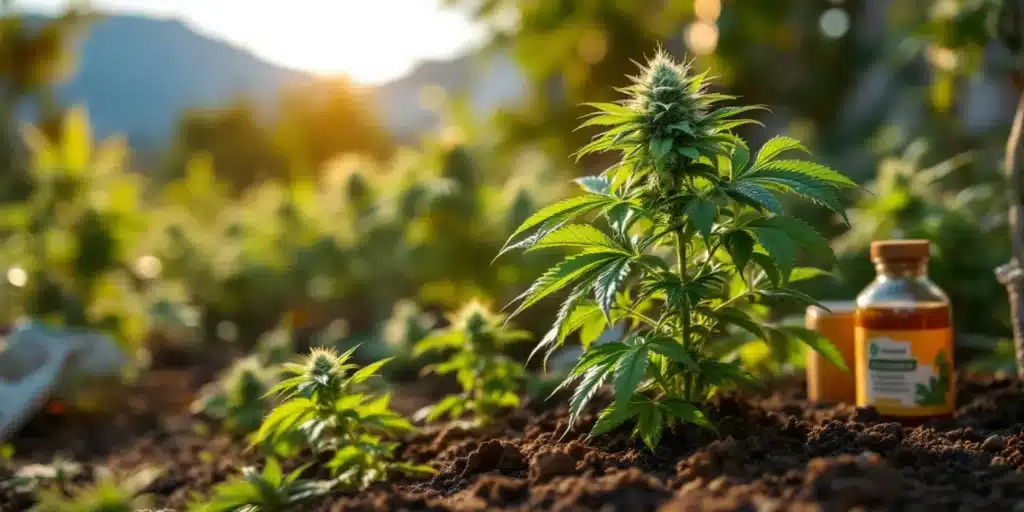
How to Cross Autoflower Strains for Desired Traits
Crossing autoflower strains requires selecting two parent plants with compatible characteristics, such as similar flowering times or terpene profiles. By carefully pollinating a female autoflower with pollen from a selected male plant, growers can produce seeds that carry the desired traits. Over several generations, these traits can become stable, allowing for a reliable source of custom autoflower seeds.
Preserving Genetics with Self-Pollination
Self-pollination, or “selfing,” is a technique where a plant is encouraged to pollinate itself. In cannabis, this is typically achieved through techniques like colloidal silver or gibberellic acid, which induce the formation of male flowers on a female plant. This method produces seeds that are genetically identical to the parent, preserving specific traits with high fidelity.
Tissue Culture: An Advanced Reproduction Technique
Tissue culture is an advanced method that allows for precise genetic reproduction, though it requires specialized equipment and expertise. It’s an emerging technique in cannabis that offers promise for autoflower preservation, even though it’s not widely used for autoflowers due to cost and complexity.
Advantages of Tissue Culture Over Traditional Cloning
Tissue culture provides a clean, sterile environment that minimizes the risk of pests and diseases, which can be beneficial for preserving delicate genetics. By growing plants from small tissue samples rather than full cuttings, this method allows for precise control over the growth environment. Tissue culture also enables growers to store genetic material indefinitely, making it a promising option for preserving rare or desirable autoflower strains.
Can Tissue Culture Work for Autoflowers?
While not common, tissue culture can technically be applied to autoflowers. However, since autoflowers don’t reset their growth cycle, the process may not yield significant advantages over traditional methods. Tissue culture is still an area of research in cannabis cultivation, but it holds potential for the future, especially as technology advances.
Maximizing Autoflower Yields Without Cloning
For growers looking to boost autoflower yields without cloning, focusing on proven techniques for yield optimization is key. From training methods to optimized nutrient and light schedules, there are several ways to enhance productivity in autoflower plants.
Effective Training Techniques for Autoflowers
Training techniques can help maximize yields by encouraging bushier growth and creating more bud sites. Low-stress training (LST) is especially suitable for autoflowers, as it involves gently bending and tying down branches to increase light exposure without causing excessive stress.
Low-Stress Training (LST) to Enhance Growth
LST helps expose multiple bud sites to light, which can significantly increase yields. Since autoflowers have a limited vegetative period, LST should be started early to shape the plant efficiently. By bending branches and securing them to the side, you ensure that the plant receives even light coverage and develops a more productive canopy.
Benefits of Strategic Pruning for Better Bud Production
While pruning should be minimal with autoflowers due to their short growth cycle, strategic removal of lower leaves or “lollipopping” can enhance bud production. Removing lower growth that receives less light allows the plant to concentrate its energy on the upper bud sites, leading to larger and more potent flowers.

